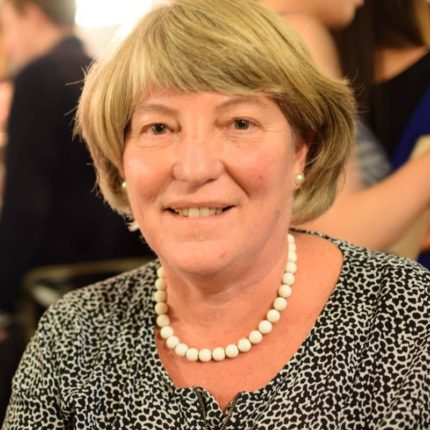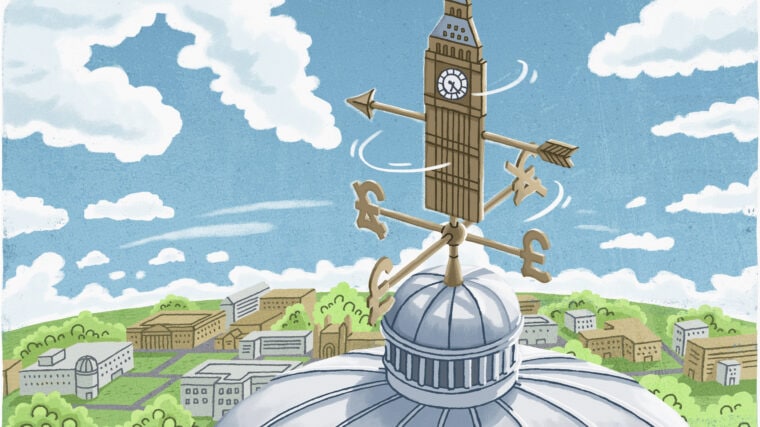I was initially dubious about the idea of an HE Power List. Was it to be yet another league table to feed our obsession with hierarchies? Was it a further opportunity to valorise prevailing notions of heroic leadership in HE? I wouldn’t support either of these. However, curiosity prevailed over doubt, and I participated in the highly entertaining and stimulating discussions that generated Wonkhe’s 2015 Power List.
The discussion provided an informal and (mainly) light-hearted opportunity to review the policy landscape over the year, ranging widely across people, politics, events, issues and places. It was insightful and thought-provoking to listen to diverse views on what and who counts or should be discounted; who is heard (and why?); where issues have traction or none; where there is style and substance, or neither.
This year the debate was as lively as ever, until it came to the top ten names when it visibly slowed. Things got even slower, virtually stagnating, in the search for the number one name. Yet deadlines and time-pressures often generate creative solutions…so the idea of a ‘void’ emerged. Should there be ‘a void’ in the number one space? What did this signify and why might there be a void? I owe my current reflections to our discussions of ‘the void’ (or voids) in the HE policy landscape of 2017 (thank you, colleagues!) In the end, we settled on a number one placement but felt the idea of a void would be worth exploring further.
In general terms, a void is a large hole or empty space. In seeking the number one (or even top ten) influencers or influences on higher education and higher education policy, there are notable empty spaces. Where are the big (or new and different) ideas about higher education that would demonstrate real intellectual leadership? They are not coming from politicians (and there are fewer politicians in this year’s Power List).
Nor are such ideas coming from higher education leaders (perhaps with one or two honourable exceptions). A quick check of UUK’s campaigns and blogs in 2016 and 2017 does not reveal much if any, engagement with ‘big ideas’ and perhaps more importantly, there appears to be a void – or disconnect – with the wider and deeper currents of change in our communities, demographics and societies. The pre-occupations of higher education policy are technocratic and inward-looking; critics of HE might say they were self-serving. In the context of Brexit, for instance, surely, there must be more for higher education leaders to influence and lobby for than the potential loss of EU funding, incoming EU talent and EU partnerships, important though these are?
Wither the academic?
Perhaps searching for intellectual leadership amongst the leaders of higher education institutions is the wrong place to look? I don’t think so (or at least, this shouldn’t be the case). However, this train of thought leads toward another potential void in the Power List. There are very few names of leading academics. One would expect these individuals (or teams) to be the generators of big ideas and innovations, yet they appear to be absent from the HE policy space. Is this because HE policy is too narrowly defined; and if so, is this just a Wonkhe problem, or wider issue for sector policy?
Alternatively, might this gap exist because the policy landscape is now populated by academic leaders whose main pre-occupation is with institutional management and governance agendas that are focused on winning, or at least surviving, in a competitive marketplace? Other voices and agendas don’t seem to get the same air time in higher education policy debates and circles, but they should. This would remind us all of the real and important purposes and contributions of higher education to the wider and pressing issues that increasingly affect our lives and work.
Do these voids matter? They do, and there are potentially significant consequences if they are not addressed. A different meaning of ‘the void’ might then apply. The higher education sector may end up with no cards of the right suit to play, or no ability to deploy trump cards when votes are needed to support the HE enterprise. Questions about value-for-money in undergraduate education will get louder than they are today, and the political support that’s needed to secure funding for research and teaching could also ebb away. It will not be enough just to re-iterate the insiders’ case for HE for HE to be high on political and policy agendas. In a context of mass higher education, it’s the outsiders’ perspectives that both matter more and are more likely to offer cards to play in the game of power and influence on policy. More ‘outside-in’ thinking and communication strategies are needed, and this will pose a range of challenges.
For example, I’m reminded of a comment by Amy Edmondson of Harvard Business School in a recent McKinsey article on the future of work. She said, “two things human beings don’t do well are thinking about the future and thinking about the collective’’. In an increasingly divided higher education sector, speaking out about the collective benefits of higher education and demonstrating the range of contributions that diverse institutions make to the UK is where higher education leaders together could and should be influential. The focus of their attention and communications should also go beyond the next two years. If this doesn’t happen, then another void will open up, potentially to be filled by other players with more powerful cards to play.
See the full 2017 HE Power List on Wonkhe













